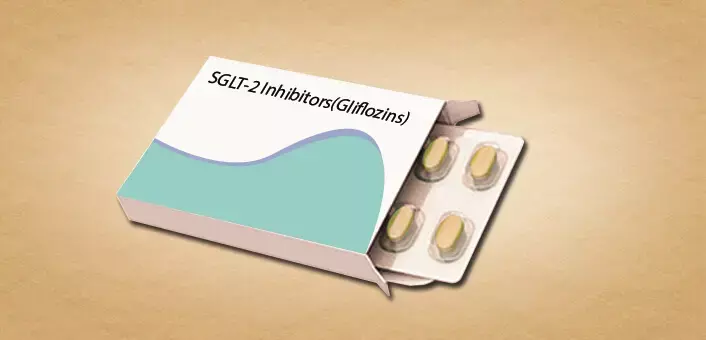- Home
- Medical news & Guidelines
- Anesthesiology
- Cardiology and CTVS
- Critical Care
- Dentistry
- Dermatology
- Diabetes and Endocrinology
- ENT
- Gastroenterology
- Medicine
- Nephrology
- Neurology
- Obstretics-Gynaecology
- Oncology
- Ophthalmology
- Orthopaedics
- Pediatrics-Neonatology
- Psychiatry
- Pulmonology
- Radiology
- Surgery
- Urology
- Laboratory Medicine
- Diet
- Nursing
- Paramedical
- Physiotherapy
- Health news
- Fact Check
- Bone Health Fact Check
- Brain Health Fact Check
- Cancer Related Fact Check
- Child Care Fact Check
- Dental and oral health fact check
- Diabetes and metabolic health fact check
- Diet and Nutrition Fact Check
- Eye and ENT Care Fact Check
- Fitness fact check
- Gut health fact check
- Heart health fact check
- Kidney health fact check
- Medical education fact check
- Men's health fact check
- Respiratory fact check
- Skin and hair care fact check
- Vaccine and Immunization fact check
- Women's health fact check
- AYUSH
- State News
- Andaman and Nicobar Islands
- Andhra Pradesh
- Arunachal Pradesh
- Assam
- Bihar
- Chandigarh
- Chattisgarh
- Dadra and Nagar Haveli
- Daman and Diu
- Delhi
- Goa
- Gujarat
- Haryana
- Himachal Pradesh
- Jammu & Kashmir
- Jharkhand
- Karnataka
- Kerala
- Ladakh
- Lakshadweep
- Madhya Pradesh
- Maharashtra
- Manipur
- Meghalaya
- Mizoram
- Nagaland
- Odisha
- Puducherry
- Punjab
- Rajasthan
- Sikkim
- Tamil Nadu
- Telangana
- Tripura
- Uttar Pradesh
- Uttrakhand
- West Bengal
- Medical Education
- Industry
Combo of SGLT2 and ACE inhibitors reduces risk of cardiorenal complications: Circulation

Empagliflozin addition to ramipril, betters surrogate measures of kidney protection in patients with uncomplicated type 1 diabetes and preserved kidney function, the study found.
Canada: Findings from a recent study published in the journal Circulation have supported the protective physiologic role of sodium-glucose cotransporter two inhibitors (SGLT2 inhibitor), characterized by a decrease in intraglomerular pressure and the related cardiorenal risk.
"We found that the addition of SGLT2 inhibitor to angiotensin-converting enzyme inhibitor leads to suppression of oxidative stress markers, expected dip in glomerular filtration rate (GFR), and additive reductions in total peripheral resistance and blood pressure," David Z.I. In their study, Cherney, Toronto General Hospital, Toronto, Ontario, Canada, and colleagues wrote.
The researchers conducted the mechanistic study to assess the combined cardiorenal effects of sodium-glucose cotransporter two inhibition (empagliflozin 25 mg QD) with angiotensin-converting enzyme inhibition (ramipril 10 mg QD) in type 1 diabetes patients with potential renal hyperfiltration.
The placebo-controlled, double-blind crossover trial was completed by thirty out of 31 randomized patients. Recruitment was terminated early because of an unexpectedly low section of people with hyperfiltration. Over 19 weeks, the researchers obtained measurements following each of the six treatment phases: (1) baseline sans treatment, (2) ramipril treatment alone for four weeks, (3) combined treatment with empagliflozin-ramipril for four weeks, (4) combined placebo-ramipril treatment for four weeks (5) a washout for 4-week, and (6) follow-up for 1-week.
GFR after combined treatment with empagliflozin-ramipril versus placebo-ramipril. GFR was corrected for alone ramipril treatment before randomization. At the end of the study period, measurements of the following outcomes were done under clamped euglycemia: inulin (GFR) and para-aminohippurate (adequate renal plasma flow) clearances, tubular sodium handling, heart rate variability, arterial stiffness, ambulatory blood pressure, monitoring of noninvasive cardiac output, oxidative stress, markers of the renin-angiotensin-aldosterone system, and plasma and urine biochemistry.
The study yielded the following results:
· Combination treatment with empagliflozin-ramipril led to an 8 mL/min/1.73 m2 lower GFR than placebo-ramipril treatment without significant changes to the adequate flow of renal plasma.
· GFR decrease occurred with a 21.3 mL/min lower absolute proximal fluid reabsorption rate, a 3.1 mmol/min lower absolute proximal sodium reabsorption rate, and a 194 ng/mmol creatinine lower urinary 8-isoprostane level relative to placebo-ramipril combination treatment. Sodium-glucose cotransporter two inhibitor/angiotensin-converting enzyme inhibitor combination treatment resulted in additive blood pressure–lowering effects (clinic systolic blood pressure lower by 4 mm Hg; diastolic blood pressure lower by 3 mm Hg) in conjunction with a 94.5 dynes × sex/cm5 lower total peripheral resistance).
· No significant changes were observed to ambulatory blood pressure, heart rate variability, arterial stiffness, or cardiac output with empagliflozin addition.
The researchers showed that the addition of SGLT2 inhibitors to ACEi treatment is tied to a significant kidney hemodynamic effect characterized by a modest reduction in GFR that was not noted when a placebo was added to ACEi. Also, SGLT2i's addition to ACEi led to an additive BP-lowering effect, which a decline in total peripheral resistance may partly medicate.
"Our findings support a cardiorenal protective physiologic mechanism SGLT2i use when added to ACEi to lower intraglomerular pressure and reduce cardiorenal risks in diabetes patients," the researchers wrote.
Reference:
Lytvyn Y, Kimura K, Peter N, Lai V, Tse J, Cham L, Perkins BA, Soleymanlou N, Cherney DZI. Renal and Vascular Effects of Combined SGLT2 and Angiotensin-Converting Enzyme Inhibition. Circulation. 2022 Aug 9;146(6):450-462. doi: 10.1161/CIRCULATIONAHA.122.059150. Epub 2022 Jul 11. PMID: 35862082; PMCID: PMC9354594.
Dr Kamal Kant Kohli-MBBS, DTCD- a chest specialist with more than 30 years of practice and a flair for writing clinical articles, Dr Kamal Kant Kohli joined Medical Dialogues as a Chief Editor of Medical News. Besides writing articles, as an editor, he proofreads and verifies all the medical content published on Medical Dialogues including those coming from journals, studies,medical conferences,guidelines etc. Email: drkohli@medicaldialogues.in. Contact no. 011-43720751


